Genotype × environment interaction and genetic improvement for yield and yield stability of rainfed durum wheat in Iran

Authors:
The genotype × environment (GE) interaction influences genotype selection and recommendations. Consequently, the objectives of genetic improvement should include obtaining genotypes with high potential yield and stability in unpredictable conditions. The GE interaction and genetic improvement for grain yield and yield stability was studied for 11 durum breeding lines, selected from Iran/ICARDA joint program, and compared to current checks (i.e., one durum modern cultivar and two durum and bread wheat landraces). The genotypes were grown in three rainfed research stations, representative of major rainfed durum wheat-growing areas, during 2005–09 cropping seasons in Iran. The additive main effect and multiplicative interaction (AMMI) analysis, genotype plus GE (GGE) biplot analysis, joint regression analysis (JRA) (b and S2di), six stability parameters derived from AMMI model, two Kang’s parameters [i.e., yield-stability (YSi) statistic and rank-sum], GGE distance (mean performance + stability evaluation), and two adaptability parameters [i.e., TOP (proportion of environments in which a genotype ranked in the top third) and percentage of adaptability (Ad)] were used to analyze GE interaction in rainfed durum multi-environment trials data. The main objectives were to (i) evaluate changes in adaptation and yield stability of the durum breeding lines compared to modern cultivar and landraces (ii) document genetic improvement in grain yield and analyze associated changes in yield stability of breeding lines compared to checks and (iii) to analyze rank correlation among GGE biplot, AMMI analysis and JRA in ranking of genotypes for yield, stability and yield-stability. The results showed that the effects due to environments, genotypes and GE interaction were significant (P < 0.01), suggesting differential responses of the genotypes and the need for stability analysis. The overall yield was 2,270 kg ha−1 for breeding lines and modern cultivar versus 2,041 kg ha−1 for landraces representing 11.2 % increase in yield. Positive genetic gains for grain yield in warm and moderate locations compared to cold location suggests continuing the evaluation of the breeding material in warm and moderate conditions. According to Spearman’s rank correlation analysis, two types of associations were found between the stability parameters: the first type included the AMMI stability parameters and joint regression parameters which were related to static stability and ranked the genotypes in similar fashion, whereas the second type consisted of the rank-sum, YSi, TOP, Ad and GGED which are related to dynamic concept of stability. Rank correlations among statistical methods for: (i) stability ranged between 0.27 and 0.97 (P < 0.01), was the least between AMMI and GGE biplot, and highest for AMMI and JRA and (ii) yield-stability varied from 0.22 (between GGE and JRA) to 0.44 (between JRA and AMMI). Breeding lines G8 (Stj3//Bcr/Lks4), G10 (Ossl-1/Stj-5) and G12 (modern cultivar) were the best genotypes in terms of both nominal yield and stability, indicating that selecting for improved yield potential may increase yield in a wide range of environments. The increase in adaptation, yield potential and stability of breeding lines has been reached due to gradual accumulation of favorable genes through targeted crosses, robust shuttle breeding and multi-locational testing.
